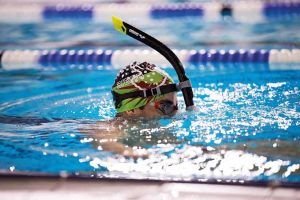
7 Best Swim Snorkels for Better Technique and Faster Swimming
Ready to throw down on a new swimmer’s snorkel? Here are reviews of the best swim snorkels for lap swimming.
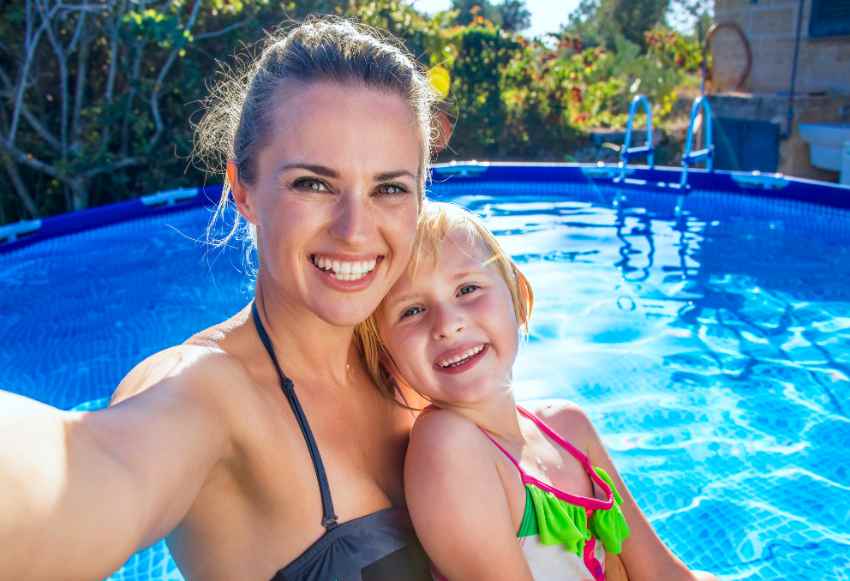
Make the most of your swimming pool with the best pool treatment shocks for keeping your backyard pool crystal-clear this summer.
At some point, it’s bound to happen with your swimming pool…
The water gets cloudy, yucky, or the pool water develops that foul ammonia smell that you get from poorly ventilated indoor swimming pools (lookin’ at you, local YMCA).
The cause of cloudy pool water and excess chloramines can be varied but generally comes down to the fact that your chlorine levels in the pool are too low.
Maybe you had a ton of people over and everyone was enjoying the pool, or hot weather burned off a ton of chlorine, or heavy showers diluted the pool chemicals.
No worries, you can fix cloudy pool water by shocking it.
Shocking the pool raises chlorine levels to a higher-than-normal level, killing off organic contaminates. From there, your pool filter and pump do most of the work, kicking out the bugs and dead plants.
Pool shocks come in a variety of different formats, including liquid, powder or even a tablet.
As always, make sure you test your water with pool test strip or a digital pool tester to see where the chlorine levels are at before (and after) you start pumping in shock.
Let’s dive into the deep end and take a deeper look (ha—swimming pun!) at the best pool shocks for your swim pool and spa.
HTH makes some of my all-time favorite pool cleaners (yes—I am that much of a pool nerd that I have favorite cleaners) and also recommend their pool algaecide for clearing green water and their chlorine tablets for regular chlorination of your pool or spa.
The HTH Ultimate Pool Shock is a powder shock that includes half a dozen 1lb treatments. Each lump of powder can treat up to a 13,500 gallon pool and this shock is strong enough to drop-kick algae and bacteria without damaging pool liners and above-ground swimming pools.
The HTH Ultimate Pool Shock takes about 24hrs to do its thing (always test the pool water before diving back in!), contains a built-in clarifier, and prevents scale formation. Giddyup!
The DryTec Hypochlorinate Pool Shock is a favorite among casual pool owners and even pool servicing professionals. It’s one of the stronger ones out there, made of 68% calcium hypochlorite, making it ideal for nuking your pool after a big party, rainstorm, or even after some weeks or months of neglect.
DryTec sells these in a variety of quantities, with a single “serving” costing around $10 and a 12-pack running your around $90 (check Amazon for current pricing and availability). More industrial users can also take advantage of bulk pricing and purchase the DryTect Pool Shock by the 24. As mentioned, people love this stuff, with over 2,000 five-star reviews on Amazon and counting.
Whether you are looking for a reliable shock for regular pool cleaning or need to tackle a yucky pool, the DryTec Pool Shock has you covered.
Another heavy-duty pool shock for medium to severe cleaning is the Zappit Shock, which has a 73% cal-hypo formula with up to 70 percent of free chlorine. A granular shock that won’t over-stabilize your chlorine levels (thanks to no CYA), this bad boy comes in a big old bucket of algae and contaminant-killing awesomeness.
Users note that the powder is very fine and that you should take extra care when darker clothing when handling this product. Dilute before use, sprinkle for regular cleaning, and keep the crystal-clear waters of your pool swimmable and clean for the duration of the pool season.
There are a few different ways to use pool shock for killing off unwelcome algae and pathogens, with granular (calcium hypochlorite) and liquid shocks (sodium hypochlorite) being the two most popular. Liquid shocks are popular as they are easy to apply and don’t require pre-mixing powders. Pour it in the pool and move along.
Austin’s Pool Tech Liquid Chlorine Pool Shock checks all of the boxes for a reliable and powerful shock. At the beginning of the season, use 50-100 ounces of liquid shock to get the pool balanced (per 10,000 gallons) and upkeep takes just 11oz for keeping your water nice and clean over the summer and swimming season.
Leisure Pool & Spa’s chlorine pool shock is one of the few liquid chlorine shocks that are available online for sale, usually priced cheaper than you would pay at a pool store (check Amazon for up-to-date pricing).
Formulated with 12.5% sodium hypochlorite (that’s liquid chlorine, sports fans!) this liquid can be poured directly into your swimming pool or through a metering pump. You can use it to shock the pool after a big rainstorm or even add a little regularly to your pool during the off-season to keep the pool clean and save you a ton of work and money when it comes to reopening.
Leisure Pool & Spa are longtime specialists in the pool chemistry game, producing industry-leading algaecides, calcium increasers, phosphate removers, and so on.
Best non-chlorine shock for salt swim pools
Non-chlorine shocks are a good option for saltwater pools and for people who simply don’t want to deal with risking increased chlorine levels for a sustained time.
Clorox’s Chlorine-Free Oxidizing Pool Shock helps target chloramines (the byproduct of chlorine interacting with bodily fluids and usually what causes that foul ammonia smell you experience at poorly ventilated and balanced public swim pools).
Each pack contains six 1lb tablets that seek and destroy organic contaminants, reducing cloudy water and returning your pool back to a clean and sparkling state.
Got questions? I’ve got answers. Here are some of the most common questions I get regarding pool shocks, as well as a simple to-do list for applying shock to your pool or spa.
It’s helpful to start with what shocking the pool water actually is, and no, it’s not throwing a plugged-in toaster into the water in the hopes of zapping bacteria and algae.
Rather, we shock the pool by temporarily increasing the levels of chlorine (or other pool chemicals—chlorine isn’t the only game in town) so that we can raise the free chlorine levels.
Shock is a fancy-pants way of saying that we are adding a bunch of chlorine to the pool to clean the water.
This is a very common mistake, and I can understand why it happens as we associate the smell of chlorine with “cleanliness” or “hairless.”
But when your pool smells harshly of chemicals, this is actually a red flag that your pool water isn’t properly balanced. What you are smelling is actually chloramines, which is a byproduct of chlorine reacting with organic matter (also known as combined chlorine).
When your pool is clean, it should smell faintly of pool chemicals, bordering on being odor-free.
Shocking your pool properly requires an understanding of the types of chlorine. Yes… there are different kinds of chlorine.
But fret not, this is simple when you go through the ones you need to know:
The first three types of chlorine are crucial for knowing how much pool shock to apply to your swimming pool.
For indoor swimming pools and spas, you can basically shock at any time of the day.
For above-ground swim pools, it’s best to apply pool shock when the sun has gone down. The sun’s UV rays are great for tanning you and they are also great at burning off unstabilized chlorine, meaning that you will be using more chlorine than necessary.
Additionally, the wind will blow off some of your pool shock, so don’t be surprised if you have to put in a little more than expected on breezy days.
While shocking sounds scary or even dangerous, it can be done easily.
Here’s a simplified maintenance routine for shocking your pool.
✔️ Start by testing the water. Most pool test strips and digital pool testers are able to test the free chlorine and total chlorine levels of your pool. Note these two numbers.
✔️ Determine combined chlorine levels. Subtracting the free chlorine from your total chlorine gives you the amount of combined chlorine. Take that number, and times it by 10 (check with your pool and specific pool shock for specific figures, this is an example), and that’s how much chlorine we are going to put in the water.
✔️ Turn the pump on. If it isn’t already on, make sure that your pool pump is running so that it can circulate the chlorine in the water. This is also a good time to put on gloves and glasses to protect eyes and skin from exposure to pool chemicals.
✔️ Add pool shock to your pool. Whether you use a granular pool shock, a mixed pool shock, or a liquid pool shock, it’s time to apply it to the water.
✔️ Let it marinate. Pool shocks generally take around 6-8 hours to properly circulate (depending on the strength of your pool pump), or however long it takes for the pump to fully circulate the volume of your pool. Although it’s called “shocking,” it’s not instant.
✔️ Test it again. Let’s see where those numbers are at. Odds are good you might have to wait a little while to allow the chlorine levels to taper. If the free chlorine levels have decreased to 1 to 3 ppm, you are good to use the pool again. If free chlorine levels are higher than 3 ppm, give it another couple of hours to test again.
✔️ Cannonball time! Now that your hard work is completed, and the pool water is ready and clean, it’s time to unleash your best cannonball into the water. Enjoy!
6 Best Variable Speed Pumps for Swim Pools. Frustrated with big electricity bills from your backyard pool? Replace your standard pool pump with one of our favorite cost-saving variable speed pool pumps.
6 Best Floating Chlorine Pool Dispensers. Keep your pool balanced and clean with our hand-picked selection of the best floating pool dispensers.
Subscribe to the YourSwimLog.com newsletter and get tips and advice on how to swim faster every weekday morning, straight to your inbox.
Join 33,000+ swimmers, coaches, and swim parents learning what it takes to swim like a boss.
Unsubscribe anytime. Email will never be shared or sold.

Olivier Poirier-Leroy Olivier Poirier-Leroy is the founder of YourSwimLog.com. He is an author, former national level swimmer, two-time Olympic Trials qualifier, and swim coach.

Ready to throw down on a new swimmer’s snorkel? Here are reviews of the best swim snorkels for lap swimming.
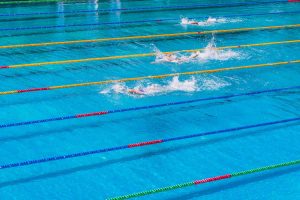
Looking to get some new swim gear on a budget? Shop the best Black Friday deals for swimmers in this exclusive guide.
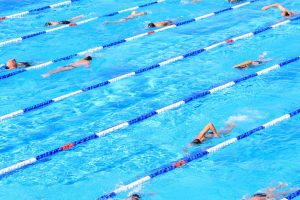
Looking for the best swimming app to maximize your time and effort in the water? Here’s a look at the top swim apps for conquering your swim workouts.
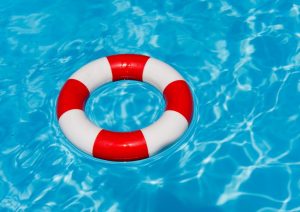
Wondering how often you should be testing the water in your pool or spa? Here’s a detailed look at how frequently you should test your pool. Your swimming pool and spa relies on being properly balanced to keep the water clean and safe for swimming. As a pool owner, you
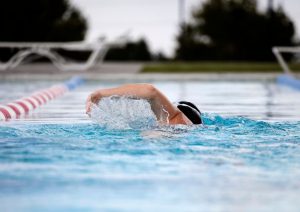
Fed up with the effects and smell of chlorine in your hair after swimming? Here is how to remove chlorine from your hair once and for all.
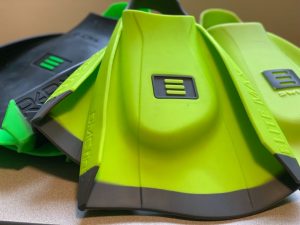
The DMC Elite fins are high-performance training fins for competitive swimmers. Here’s a review of why these fins are flat-out awesome.

LANE 6 PUBLISHING © 2012-2024 · PRIVACY POLICY · RETURN POLICY · TERMS OF SERVICE · AFFILIATE DISCLOSURE